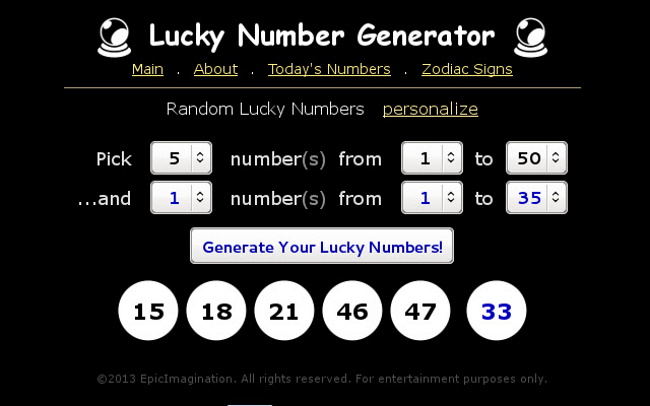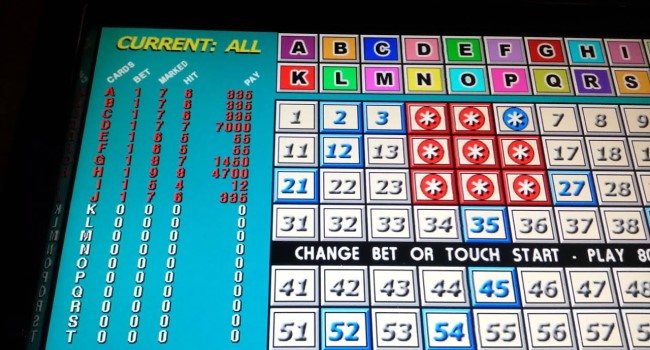The Basics of Keno for the Beginners
Keno is one of the most popular forms of wagering. It is a game that’s played in casinos across the globe. Here are the Basics of Keno for the Beginners.
The name keno appears to be of Latin origins. Literally with meaning five winning numbers, but it’s difficult to trace how the game arrived in North America. Although the name’s origin is distinctly European, the game itself appears to have appeared from China.
During the 19th century, Chinese immigrants brought baige piao to the West when they traveled across the Pacific Ocean to help build the First Transcontinental Railroad.
At the beginning of the 1900s, the game adopted the name Chinese lottery, and its popularity triggered across the US. During this time, it also acquired the name keno. In 1933, keno was brought to Reno, Nevada, and featured in casinos as racehorse keno. This version of the game used the names of horses rather than numbers due to the state’s laws concerning lotteries at the time.
Here are the basics of Keno for the beginners and some specific strategies that could increase your chances of winning.
1. The basic concept

Keno, as a game is just basic, much like playing the modern lottery. Its simplicity has made it a popular system that has spun off into raffles, pull tab games, and other variations. This is one of the Basics of Keno for the Beginners.
Basics of Keno for the beginners you should know that to play keno, you select numbers and hope that they hit. Although simple, the challenge and strategy are found in how you wager.
First, you have to decide how much you’ll wager on a specific round and how many numbers you’ll choose. You can select up to 20 numbers between 1 and 80, just like you would when playing the lottery. The payouts vary based on how many numbers you pick and how many of them get drawn.
As the game begins, 20 of the 80 numbers are chosen at random using a ball machine or another random number generator.
While keno isn’t the most thrilling game in the world of gaming, it’s an entertaining lottery-style game that’s easy to learn, is readily available in many different formats, and can make a lot of money for those who master its underlying intricacies.
2. The basic terminologies of keno

To get the most out of your keno gaming experience, here are some terms you should familiarize yourself with:
- Ticket – the Keno betting cards that players use to pick numbers
- Spots – the numbers that a player picks
- Race – a Keno game
- Catches – when a number is randomly drawn matches a player’s pick
- Paytable – a casino’s set calculation for payouts, which normally depends on how many numbers are drawn total, the number of spots a player chose, and the amount of the wager
3. Using probability to choose your spots

At keno, you select numbers randomly, which means no pattern or magic trick should be possible. However, keno fanatics have methods and strategies for picking numbers that they swear by and may stick to diligently. This is also one of the Basics of Keno for the Beginners.
The first method for selecting spots that people utilize is the hot number concept. They attempt to use statistics to determine which numbers players select more often than others.
The second method is the cold number system, which is the inverse of picking hot numbers. The idea here is that a number could be due. In other words, a particular number that hasn’t been drawn in a long time has to be chosen sooner or later. With each round that goes by without that number being selected, the probability of it being selected in a future round increases.
4. Lucky Numbers

This method is famous among lottery players, is based on a belief in the power of significance or superstition. Many keno regulars have specific numbers they favor, usually for some sort of sentimental reason, a belief in the cosmic pull, or just plain fortune. This is one of the Basics of Keno for the Beginners. Reasons for choosing numbers include:
- Birthdays
- Anniversaries
- Birth years
- Children’s ages
- Adding significant numbers together
Many people avoid the number 13 while favoring the number 7 for superstitious reasons.
The game is truly random, so pick your spots in whatever way makes the game the most fun for you. Remember that it’s random, sit back, and enjoy the game.
5. Keno odds

It is known for having a pretty slanted house edge, hovering around 20% according to some estimates.
Studying the odds of keno in advance can help you make decisions on how to place your wager. When playing a 20 spot game, so you choose 20 of the 80 numbers available, the odds could be:
- 0 correct numbers out of 20 are about 1 in 843
- 1 correct number out of 20 are about 1 in 86
- 2 correct numbers out of 20 are about 1 in 20
- 3 correct numbers out of 20 are about 1 in 8
- 4 correct numbers out of 20 are about 1 in 4.8
- 5 correct numbers out of 20 are about 1 in 4.2
- 6 correct numbers out of 20 are about 1 in 5.2
- 7 correct numbers out of 20 are about 1 in 8.8
- 8 correct numbers out of 20 are about 1 in 20
- 9 correct numbers out of 20 are about 1 in 61
- 10 correct numbers out of 20 are about 1 in 253
- 11 correct numbers out of 20 are about 1 in 1,423
- 12 correct numbers out of 20 are about 1 in 10,968
Successful wagering in keno needs the player to know how likely it is to catch a certain number of spots in certain situations.
The best odds are between 3 catches in 20 and 7 catches in 20. Achieving more than 7 catches means you have to beat ever-worsening odds, and achieving more than 10 catches means you face extremely poor odds.
6. Finding a good race

You can find a game that has a beneficial paytable as is the most important strategy to succeed at keno. Make sure you understand the rules and betting of the race (game) before you wager to find maximum advantages.
Higher payouts for lower risk.
7. Types of Keno Wagers

A straight-ticket means betting the numbers marked as a single wager. It’s the simplest way to play.
A way ticket is a combination wager that many players favor. A player might mark 6 numbers, circle 2 groups of 3, and mark on the side of the ticket, “2/3, 1/6.” This says that the player has bet $3 to have $1 wagers each of 2 three-spot combinations and on the six-spot. There are endless creative combination wagers like this that players can try.
A king ticket is a number selected by itself, which represents the king. The king is used in all combinations marked. As a player betting a king ticket would mark “2/4, 1/7” to bet 2 four-number combinations—the king added to each of the three-number groupings, and the overall 7 numbers.
Synopsis
Keno is a fascinating lottery-like game of chance. Overall, keno payouts should be considered too uncertain to play the game seriously or with any expectations to win. An offhand game or two over a drink on the casino floor or while relaxing in the keno lounge is standard for most gaming enthusiasts.
No sound strategy exists for selecting numbers, as the random determination renders any number as likely to come up as any of the others.
The best strategy is quite simple – compare pay tables and play at the house that pays the most for the number of spots you opted for.


